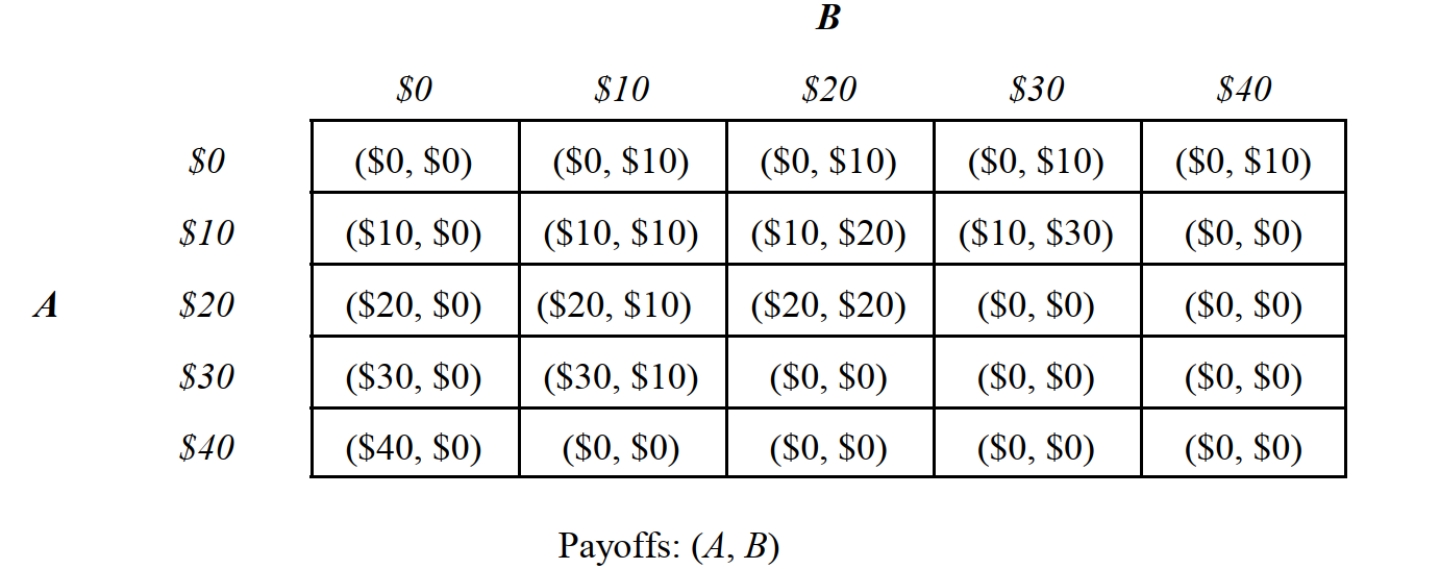Multiple Choice

-Consider the one-time Nash bargaining game depicted in Figure 12.1 in which A and B individuals are bargaining over the distribution of $40. Bids must be in increments of $10. In this game, the sum of the players' bids cannot exceed $40. If the sum of the bids are less than $40, each bidder receives his or her bid, and the rest goes to charity. If the sum of the bids exceeds $40, the bidders receive nothing, and $40 is given to charity. The most likely explanation for the outcome of this bargaining game is:
A) Backward induction.
B) Minimax theorem.
C) Cournot model.
D) Maximin decision rule.
E) Bertrand paradox.
Correct Answer:

Verified
Correct Answer:
Verified
Q44: Suppose that management and labor are bargaining
Q45: Molly is interested buying Polly's antique doll
Q46: A seller's reservation price in bargaining is:<br>A)
Q47: Molly is interested buying Polly's antique doll
Q48: It is March and Ozzie wants to
Q49: Suppose that management and labor are bargaining
Q50: Andrew wants to purchase Adam's car. Andrew
Q51: <img src="https://d2lvgg3v3hfg70.cloudfront.net/TBR1330/.jpg" alt=" -Symmetric impatience refers
Q52: Molly is interested buying Polly's antique doll
Q53: Andrew wants to purchase Adam's car. Andrew